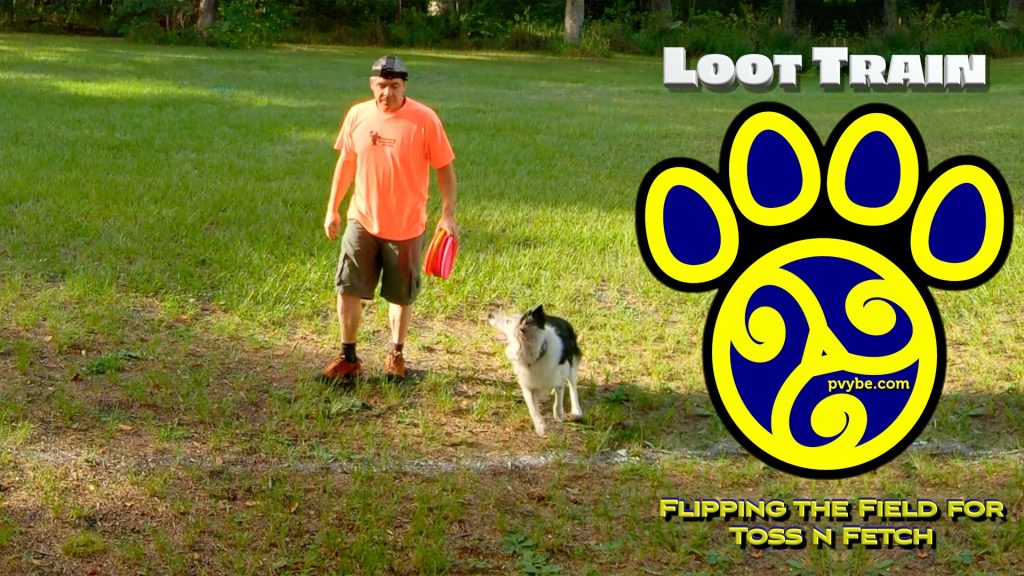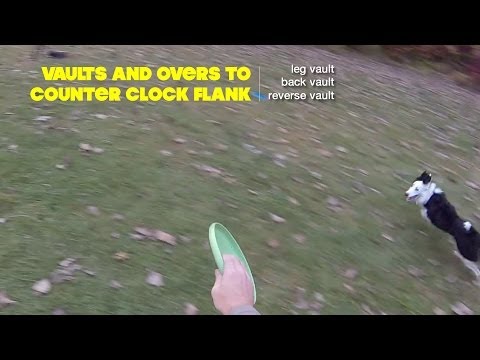
Setting a Working Flank with Vaults and Overs
Vault to Flank
Setting the Flank after a Vault or Over is a really simple task. All you have to do is turn in the direction the dog releases to after the catch. Lift the hand closest to the dog and you are on Flank.
release = where and how the dog moves after a trick
It is easy to get on Flank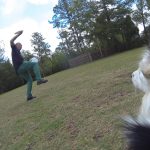 Out to the side of the handler is the Flank. If the dog is out to the handler's right or left the dog is on Flank. If the dog is moving with the... More from a Vault
Out to the side of the handler is the Flank. If the dog is out to the handler's right or left the dog is on Flank. If the dog is moving with the... More from a Vault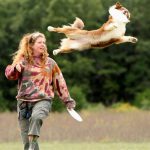 The dog uses the player´s body as a launching pad to jump for a disc. A Vault is a leaping catch from the handler’s body. The dog leaves the ground for the target... More or Over
The dog uses the player´s body as a launching pad to jump for a disc. A Vault is a leaping catch from the handler’s body. The dog leaves the ground for the target... More or Over An Over is any leaping catch that happens over top of the handler’s body. Overs are usually named by the part of the body over which the dog flies, i.e - Leg Over,... More, but staying on Flank or working the Flank may be another story.
An Over is any leaping catch that happens over top of the handler’s body. Overs are usually named by the part of the body over which the dog flies, i.e - Leg Over,... More, but staying on Flank or working the Flank may be another story.
Many dogs don’t have a lot of experience catching consecutive discs away from the handler as they have been worked in a “Go Get it – Bring It Here” foundation. This places a ton of value on either the disc or the handler, or potentially both, and allows the dog to simply drive after the target and the handler. This in and out pattern makes keeping the dog off the handler quite difficult.
More Flatwork
use Directional Feeding, Oppositional Feeding, the Pendulum, Zig Zag, and Around the World Patterns to cultivate depth in your game and patience in your dog.
This stuff is hard for many teams because previous patterns have become habitual. That’s why we do so much work here at PVybe on this Flatwork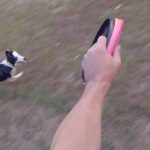 Flatwork is the stuff that happens between the catches. How the team moves and transitions, often without the disc, is flatwork. Flatwork concepts in disc dog are taken from the agility and herding... More foundation because those are our dog’s habits. Of course it’s going to be hard to do if those are not your dog’s habits. You need to create those habits. A good Flatwork Foundation is a great way to create a nice working Flank.
Flatwork is the stuff that happens between the catches. How the team moves and transitions, often without the disc, is flatwork. Flatwork concepts in disc dog are taken from the agility and herding... More foundation because those are our dog’s habits. Of course it’s going to be hard to do if those are not your dog’s habits. You need to create those habits. A good Flatwork Foundation is a great way to create a nice working Flank.
Reward Placement is Key
having trouble? just throw it where you want the dog to be. seriously. right after the catch, or after the cued Drop, just chuck it so the dog stays on flank…
You can see Ron & Loot working this @ 1:14 in this clip. Ron threw it wider than Loot’s chosen circle and did so to make it more likely that Loot would release to that area of the field while working the flank. Getting it out there to the outside of the circle, asking the dog to turn outside while on Flank is incompatible with an aggressive approach to the handler and helps to loosen up the working Flank.
Criteria
your criteria for throwing when trying to loosen up a Flank is any increase in distance from the handler. anything that expands the dog’s circle can be marked and reinforced with proper Reward Placement.
Sometimes when working the Flank your dog will wind up too close to you but still working. You can easily shape a wider circle by marking anything that resembles your criteria of further away, any widening of the circle, and reinforcing at a distance of your choice (preferably far enough to get the dog to further widen the circle…). This can have dramatic and nearly instantaneous results.
You might need to have very low criteria on the expansion of the circle for some dogs and you might need to sidestep that criteria entirely and get it as a byproduct of something else. Not all dogs are capable of making a sensible decision in the presence of a moving handler with discs.
Working off of the cued Drop, the re-orientation of the dog to the handler, the pick up of the handler by the dog, or even the catch – marking those behaviors can help you get something that you can reinforce before the old pattern gets started. When you leverage those behaviors early in the behavior chain you can then use Reward PlacementThe dog puts his face where the Cookie or the disc happens. Where you put the reward matters. Reward Placement is huge in disc dog freestyle. Your dog’s face will always wind up... More to create different patterns and habits of movement.







